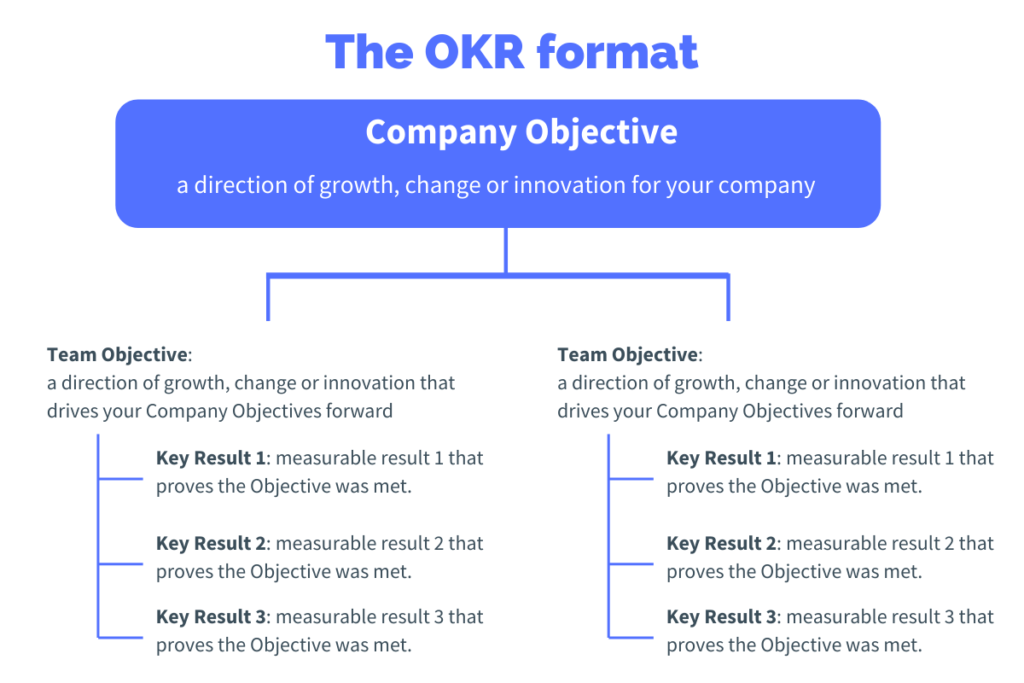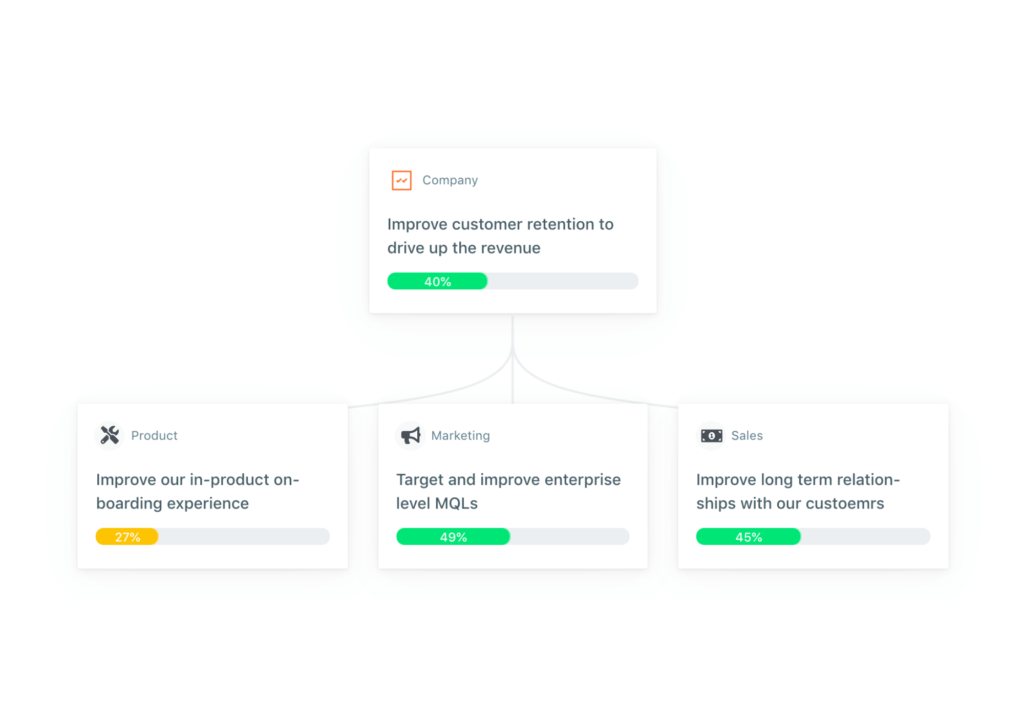Invite your teams. Start a company-wide trial with all features. 14 days free.
This site by Weekdone – the world leader in OKR software – provides OKR examples as references and inspiration when thinking about how to structure your own OKRs. You will not be able to pick out OKRs from this site (or any site at all) and apply them directly to your company or team. You need to learn the OKR methodology to truly benefit from it. Otherwise, you will be missing the point of OKRs.
Let’s look at the proper OKR format so you can successfully create your own OKRs.
What are Objectives?
The “O” in OKR stands for Objective. This is a direction and focus area for one quarter. In other words, the quarterly goal.
Objectives:
- Drive growth, change, or innovation in your company or team;
- They should be motivational, guiding, and provide enough clarity;
- Written as an inspirational statement, without any numbers!
💡Tip: Try starting your Objective using a verb. For example: Improve cross-team collaboration.
What are Key Results?
A Key Result helps measure the realization of your Objective. The combination of 3-5 Key Results per Objective will help you determine whether or not you’ve achieved your goal.
Key Results:
- Are quantifiable, measurable outcomes (not outputs)
- Should include a start and target value;
- Should be tracked on a weekly basis, update values to make sure you’re on the right track to succeed on the Objective.
💡Tip: Key Results are not KPIs, they are measurable outcomes achieved by a specific set of Initiatives.
OKR Format for Companies
Most companies should have 1-2 overarching Objectives to provide direction for the Team OKRs. You may need more if you are a large company.
🎯Company Objectives should NOT have Key Results. Team OKRs become the Company Key Results.
Huh?!? We know, we just blew your mind.
The Company Objectives offers alignment for all teams in your organization. They guide the teams to write OKRs that are all pointed in the same direction. Team OKRs are the driving force toward achieving Company Objectives.
OKR format for teams
The basic OKR format for teams is this:
O: [Insert a direction of growth, change, or innovation that drives the Company Objective forward, from the perspective of your team]
KR1: [Insert measurable result 1 that proves the Objective is met.]
KR2: [Insert measurable result 2 that proves the Objective is met.]
KR3: [Insert measurable result 3 that proves the Objective is met.]
💡Tip: Teams can have up to 5 Key Results under one Objective. The minimum recommendation is 2-3 Key Results.
When creating your OKRs, think of your Company Objective and how your team can help achieve that Objective.
Then discuss with your team the following questions:
- What can we create, fix or improve in one quarter?
- What problem do we need to solve first?
- What data do we have to measure the outcomes we hope to achieve?
Have an OKR in mind and want some validation on its quality? Check out our OKR AI validator. In Weekdone OKR Software, the OKR Wizard feature helps you do just that!
Not to mention Weekdone in-product OKR examples to use and make your own. Try all features in a free 14-day trial today!
Visualize the OKR Format with Ease
The OKR format is simple.

Company: 1-2 Company Objectives that will be the direction and focus for one quarter. It should drive innovation, growth, or change. This provides the direction for all Team Objectives.
Team: 1-2 Objectives for each team that will set their direction and focus areas for the quarter. It should drive innovation, growth, or change. It should help achieve your Company Objectives.
Now that you have an idea of how to format OKRs, cruise this site for OKR examples. Remember, these are just examples! Use them as inspiration for your teams but when writing your own OKRs, start from your own pain points and needs.
OKRs are about improving your organization, and no one can write them for you. That is why it is important to learn the process of OKR goal-setting and its main principles.
Learn more about the process of OKR goal-setting and its main principles in Weekdone’s free ebook, Step by Step Guide to OKRs.
👉 If you want to speed up your OKR learning curve, just sign up to Weekdone. It’s a simple app built to help you learn, implement and track your OKRs. Regardless of company & team size.
Invite your teams. Start a company-wide trial with all features. 14 days free.

